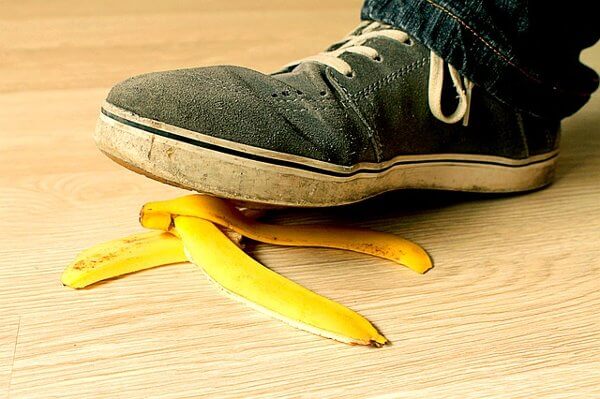Elements of a Slip and Fall Lawsuit in CT
Slip and fall accidents are a serious public safety problem in the Hartford region and throughout the state of Connecticut. According to data provided by the National Floor Safety Institute (NFSI), slip and fall accidents send more than one million Americans to the emergency room each year. If you were severely injured in a slip and fall accident in Connecticut, you are entitled to recover full compensation for your damages from the at-fault party. Here, we’ll explain the legal elements that you must establish to bring a Connecticut slip and fall accident lawsuit.

The Four Basic Elements of a Slip and Fall Accident Claim
1. Duty of Care
Slip and fall cases are brought under Connecticut’s premises liability rules. This means that you can only recover compensation if you can prove that a business (or property owner) breached their duty of care to you. Under state regulations, all businesses and property owners owe a general duty of care to all customers and invited guests. This means that the “duty of care” element is easy to prove in most cases. Though, if a victim was trespassing or was otherwise expressly uninvited at the time of the slip and fall accident, they may be unable to bring a legal claim.
2. Unreasonably Dangerous Property Conditions
To recover compensation from another party, you will need to prove that they did something wrong and that those wrongful actions contributed to your injuries. Put another way, in a slip and fall case, you will need to prove that there were unreasonably dangerous conditions present on the property, and that the dangerous condition directly caused your accident. You will not be able to recover against a property owner simply because you tripped over your own two feet. Some examples of dangerous property conditions that frequently lead to slip and fall accidents include:
- Wet floors without proper warning signs;
- Spills left on the floor;
- Unrepaired leaks;
- Loose cords or other clutter in walking areas;
- Broken lights;
- Cracked floors;
- Broken stairs; and
- Negligently maintained outdoor walkways.
3. Actual or Constructive Notice
Under Connecticut law, property owners typically can only be held liable for a slip and fall accident if they had a reasonable opportunity to take action to repair or prevent the safety problem. This means that the property owner must have had notice of the unreasonable dangerous. To be clear, a victim can prove that a property owner either actually knew or should have known about the safety hazard. Ignorance is not a valid excuse. Property owners must take proactive measures to ensure their premises is safe.
4. Real Damages
Finally, to recover compensation in a slip and fall accident lawsuit, you must have actual damages. As a general rule, you only recover compensation to the extent that you can actually prove your losses. Victims need to work with a qualified personal injury lawyer who can help them ensure that the full extent of their damages are properly documented so that the responsible property owner or insurance company pays out a full and fair settlement offer.